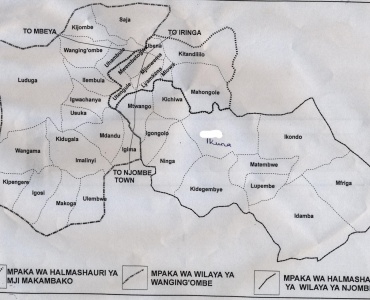Livestock production constitutes a very important component of the agricultural economy of Njombe district, a contribution that goes beyond direct food production to include multipurpose uses, such as skins, fiber, fertilizer and fuel, as well as capital accumulation. Furthermore, livestock are closely linked to the social and cultural lives of several farmers for whom animal ownership ensures varying degrees of sustainable farming and economic stability. On other hand, fishery is an entity engaged in raising or harvesting fish which is determined by some authority to be a fishery. Livestock and Fisheries Department is one of the 19 departments and Units of the Njombe District Council. The department has 19 extension staff, out of 68 extension staff needed in the council.
The core functions of the department include:
(i)Livestock Sub Sector
Livestock production originates from a large resource base composed of the different livestock species, breeds and types whose ownership and distribution differ from village to village. Livestock keeping is among the major economic activities in rural areas of Njombe district. Generally, the livestock sector is of critical importance to the council’s economy and well-being of the people. Types of livestock kept in the Council include: cattle, goats, sheep, pigs, poultry, dogs, cats, guinea pigs and rabbits. Some are kept for security purposes like dogs and cats, while the rest are kept for economic and food security purposes. These animals produce milk, eggs and meat which substantially sustain the citizen economically. There is a large market of milk to various customers, from street vendors to the Njombe milk factory which is owned by various stakeholders, Njombe District Council is among. Though, the price of milk is still low as compared to the cost of milk production. The market for eggs and chickens is also high, even if it varies from one month to another according to intensity of celebrations and meetings conducted by the community especially in towns. The livestock sector provides livelihood support to a total of 15,866 households in the Council. Currently, dairy cow produce 11 liters per day. This amount is not satisfactory for real increasing the household income and food security so as to achieve poverty alleviation in the Council.
(ii) Fishery Sub Sector
The fisheries sector is among the important economic sub sectors of the economy of Njombe district. The sector provides substantial employment, income, livelihood, and revenue to the district. Fish farming in Njombe District Council is in an infant stage. It is taking place in ponds, which are manmade. Due to its economic importance, a number of people are engaging in this economic sector. Species of fish used in these ponds include Tilapia Niloticus and Claria Spp. However, Tilapia Niloticus is the best performing type of fish in ponds in Njombe district. By June 2015, the Council had 106 fish ponds distributed in six wards.

Halmashauri ya Wilaya ya Njombe, Mtaa wa Kidegembye,Barabara ya Lupembe
Anuani ya Posta: S.L.P 547 Njombe
Namba ya Simu: +255 26 2782111
Simu Kiganjani:
Barua pepe: ded@njombedc.go.tz
Haki Miliki@2017 Halmashauri ya Wilaya ya Njombe. Haki zote zimehifadhiwa